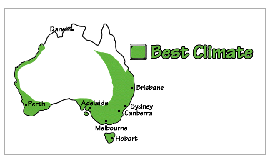Hostas are decorative plants grown for their attractive leaves more than their flowers. Features of the leaves for which hostas are admired include:
colour (for example the blue hostas with their blue/green foliage)
texture (for example leaves can be puckered or pleated)
pattern (for example variegations can be striking)
The flowers however can be attractive. They are usually white or lilac, can be fragrant and are seen in the warmer months.
Mass planting
If you’re looking for a soft plant to grow under a tall, dense planting blue hostas could be the ideal choice. These plants have blue-grey foliage and grow to form a leafy glade under a tree or in a darker garden corner. Hostas naturalise and grow thickly, thereby choking out weeds.
Snail warning
Hostas are almost zero maintenance plants, except for snail control which requires vigilance (snails love to eat hostas). Use some form of snail bait in or around hostas, especially in early spring (August to September) when new hosta leaves look like sharpened pencils and are at their most vulnerable.
Tip: Specialist hosta grower Douglas Moodie recommends the use of washed river sand on top of potting mix for containerised specimens to deter snails and slugs.
Plant details
Botanical name: Hosta spp. There are some 40 different species and many cultivars.
Common name: Hosta
Blue varieties: The following hosta varieties have good blue foliage colour and are readily available.
‘Hadspen Blue’
25cm (10″) tall x 45cm (18″) wide
leaves medium, heart-shaped, smooth and thick and a glaucous blue colour
lavender-coloured flowers are bell-shaped on straight, bare stems 40cm (16″) long
‘Big Daddy’
- 60cm (24″) tall x 90cm (36″) wide
- dark glaucous blue/green foliage with sunken foliage
- round, cupped white bell-shaped flowers
‘Halcyon’
- 30cm (12″) tall x 90cm (36″) wide
- tapering heart-shaped, blue-grey leaves, medium sized, thick and smooth. Can be intensely blue when planted in the shade
- trumpet-shaped mauve-blue flowers in summer
H. sieboldiana ‘Elegans’
- 90cm (36″ tall x 1.2m (50″) wide
- glaucous silver-blue/grey leaves which are strongly cupped and deeply puckered leaves
- trumpet-shaped, almost opalescent, lilac-coloured flowers flushed with white occur in summer
‘Blue Angel’
- 90cm (36″) height x 1.2m (50″) spread (very large and fast growing)
- blue/green pointed foliage
- nearly white flowers (sterile)
‘Blue Wedgwood’
- 35cm (14″) tall x 60cm (24″) wide
- thick wedge-shaped leaves, intense blue/grey/green in colour
- pretty bell-shaped pale lavender (almost white) flowers on bare stems to 40cm (16″) long.
Origin and best climate: Hostas are perennials which are native to Japan and China. These plants have a reputation for being difficult to grow and are often thought of as a collector’s plant. Despite their reputation many are easy to grow in areas with cool to mild climates. They are very reliable plants which cope well with temperatures to -6deg. C.
Uses:
-
underplanting in dappled light (grow to 30-50cm tall x 50cm wide or 12-18″ x 18″, depending on variety)
- flowers and foliage used for floral decorations
- good in pots, bog gardens or as a groundcover
Growing conditions:
-
likes rich and moist soil
- prefers neutral pH (that is around 7)
- feed regularly in the growing season
- grows well in the shade but needs some sun for flowering. An ideal situation has morning sun and afternoon shade.
- hostas are herbaceous perennials. This means the entire plant dies back to roots in autumn but reshoots in spring.
Getting started
1. Grow your own: Plants are best grown by division of the root mass in early spring. Although most hostas produce seed this rarely comes true to type (with the exception H. ventricosa).
2. Buying hostas: Plants are readily available at nurseries or perennial specialists. Rosemont Nursery (see details below) sells hostas in 15cm (6″) pots for $7.25 and 20cm (8″) pots for $12.75 (three year old plants).
Rosemont Nursery
960 Mt Dandenong Tourist Road
Montrose VIC 3765
Phone: (03) 9728 2222 (Douglas Moodie)
(The nursery is open seven days a week from 9am-5pm.)
Further reading
The Gardener’s Guide to Growing Hostas by Diana Grenfell (1996, Florilegium, Australia). ISBN 0-9586498-0-4.



